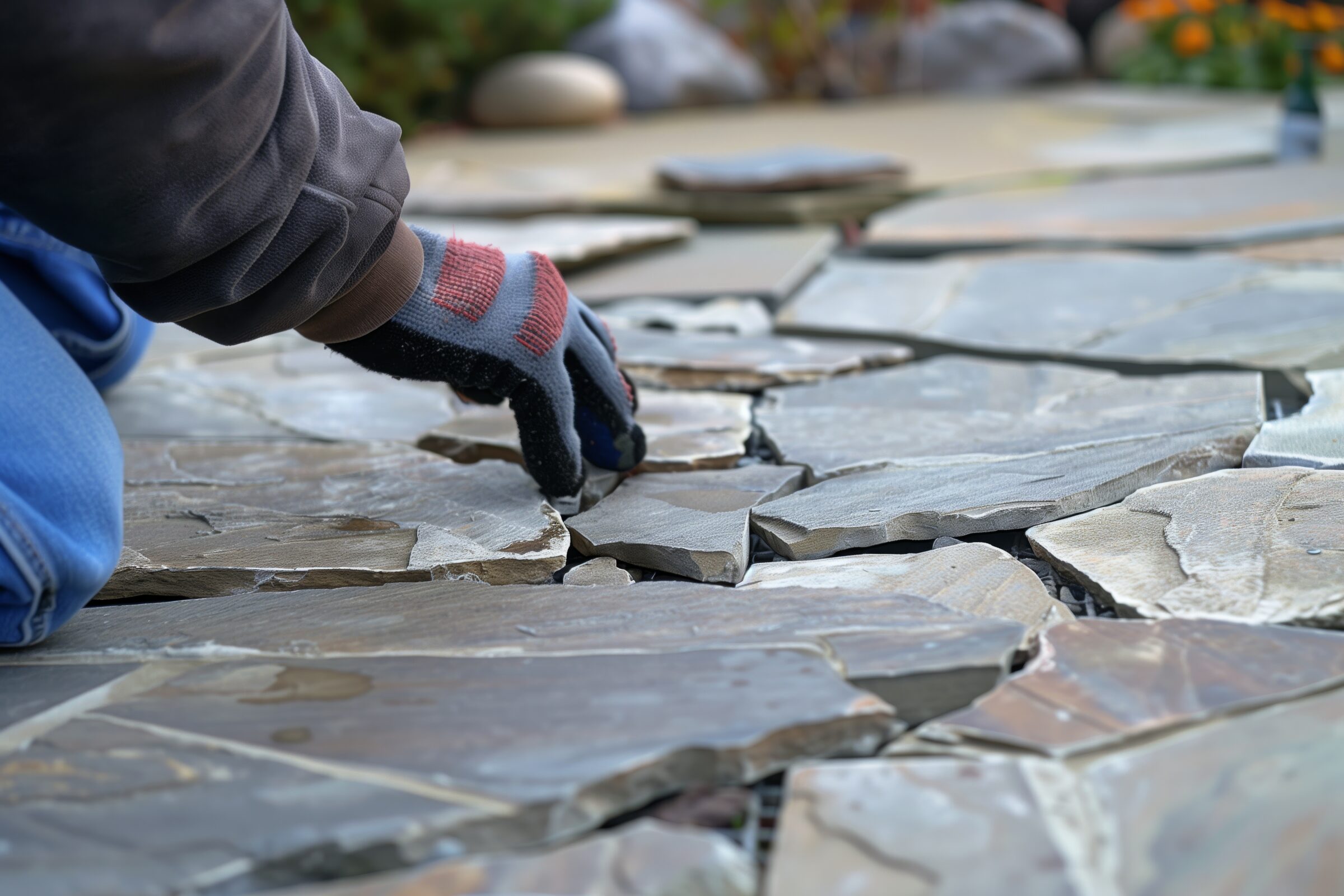DIY Flagstone Walkways That Add Charm to Your Outdoor Space
April 1, 2025

A walkway does more than connect point A to point B. It defines the space, creating a natural flow that makes an outdoor area feel intentional and inviting. Flagstone, with its organic texture and durability, blends seamlessly into the landscape, making it an ideal choice for a pathway that stands the test of time. With the right approach, it’s a functional addition, while also forming a lasting feature that enhances the entire outdoor experience.
Finding the Right Location
Placement matters. A walkway should follow the natural movement of a space, whether leading to a garden, patio, or front entrance. A gentle curve softens the look, while a straight path creates structure. Before breaking ground, it helps to walk the space and visualize how the walkway will guide movement.
Considering drainage is essential. Areas prone to pooling water may need slight elevation or additional grading to prevent erosion and shifting over time. Placed right, a path not only enhances the look of the landscape but also ensures durability through changing seasons.
Preparing the Foundation
A walkway is only as strong as its base. Marking the layout with spray paint or string helps set clear boundaries. A typical width of two to three feet provides comfortable walking space without overwhelming the yard.
Removing the top few inches of grass and soil creates room for a stable base. A compacted layer of crushed stone or gravel keeps water from collecting beneath the walkway and prevents stones from shifting over time. Finishing with a thin layer of sand levels out uneven spots and prepares the surface for flagstone placement.
Laying the Flagstone
Flagstone’s natural shape adds to its character, creating a walkway that looks like it has always belonged in the landscape. Dry-laying the stones help adjust spacing before setting them in place. Larger pieces work well as anchor stones, while smaller ones fill in the gaps, keeping the layout balanced.
For a flexible, low-maintenance option, setting stones directly in sand or gravel allows for natural movement while maintaining structure. A more permanent walkway can be created using mortar, securing the stones while preserving their raw, timeworn aesthetic. No matter the method, keeping consistent spacing and staggering joints adds strength and visual appeal.
Stabilizing Your Walkway
The material used to fill the joints affects both function and style. Fine gravel or decomposed granite blends into the walkway for a casual, natural look while allowing for proper drainage. For a more defined appearance, polymeric sand locks stones in place and helps prevent weed growth.
Ensuring even distribution of filler keeps the walkway looking polished and prevents shifting. A final pass with a broom settles the material into the joints, completing the path and reinforcing its stability.
Maintaining a Lasting Walkway
When constructed properly, a flagstone walkway requires minimal upkeep. Regular sweeping removes debris and prevents moss buildup, keeping the path looking clean. Checking for shifting stones or compacting additional filler as needed preserves the structure over time.
In colder climates, avoiding harsh de-icing chemicals protects the integrity of the stone. Instead, using sand for traction helps maintain a safe walking surface without causing damage. Simple maintenance ensures the walkway remains an inviting feature year after year.
A flagstone walkway is a statement piece that shapes the atmosphere of an outdoor space. The natural texture, careful placement, and thoughtful design all work together to create something that feels effortless yet intentional. Once the last stone is set and the filler is in place, all that’s left is to step back and let the path become part of the landscape.

